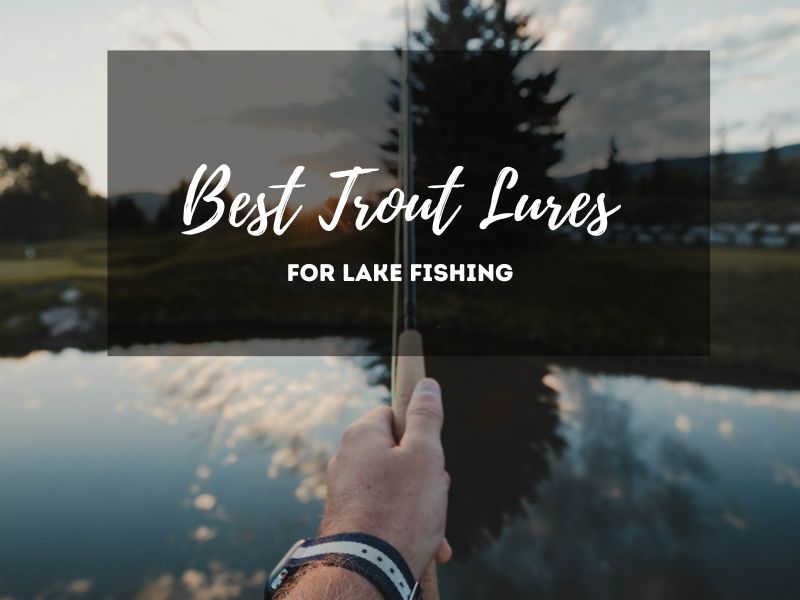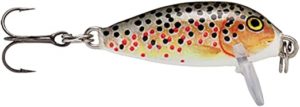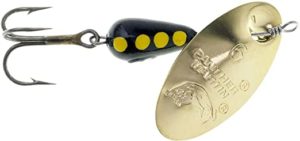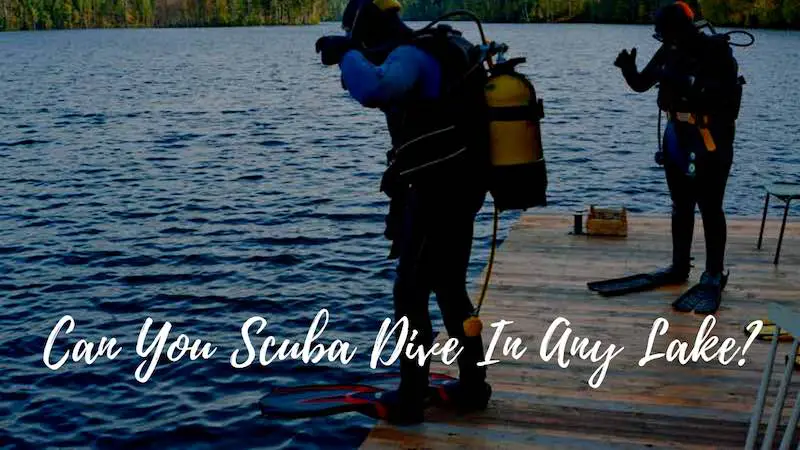
Best Trout Lures for Lake Fishing
“There is certainly something in angling that tends to produce a serenity of the mind.”
Know Something About Trout Before You Go Angling For Them
The numerous varieties of trout are very popular fish for anglers, and it is important to know a bit about your adversary before you go out on the lake looking for them. Trout will eat insects, both aquatic and terrestrial, other smaller trout, minnows, leeches and worms.
Trout are cold blooded and, as a rule, like to “drift feed” if they are in a stream. They will hold a steady position in the water facing into a current, and dart back and forth to intercept items of food that are passing.
However, if they are in a lake, trout will have to move around to catch their food. Trout will move depending on the conditions in the water, the weather and they will go where food is available when they are in a lake. Just a few degrees change in the water temperature will have an impact on where the fish are located.
Trout will look for pools and eddies in a lake, and the angler will need to look for evidence of trout food like insects and worms to know where to fish for them.
Best Trout Lures For Lake Fishing
What makes a lure good is its versatility. When you can use the same lure in different locations and under different conditions, it is a great advantage.
Here are a few of the lures that have been proven to attract trout again and again.
#1 Acme Kastmaster Fishing Lure

The Kastmaster is machined from solid brass and won’t break, bend or corrode. It comes in various sizes and colors. On Amazon, 80% of the 1,735 reviewers gave the Kastmaster 5 stars out of 5.
Check out this video to see why these anglers feel the Kastmaster is The BEST Trout Lure Of ALL TIME!! – Trout Fishing Tips & Tricks.
#2 Rapala Countdown 01 Fishing lure

This lure can be consistently fished at any depth between one and 13 feet. Looking like small trout that the larger trout feed on, the most popular size in this lure is the 7cm. Made from balsa wood, cast this lure out until the line slackens. That means the lure has hit bottom. Then start to retrieve the lure and the motion will draw the interest of the trout.
This angler gives you his opinion in this video: TOP 3 Rapala Lures For TROUT FISHING In Lakes or Ponds
Another favorite is the Rapala Original Floater which looks like a minnow.
#3 Panther Martin Holograph Trout

Panther Martin is one of the best spinning lures for trout. When using an in-line spinner, you will want to cast it out and then reel it back in. The blades on the lure spin, which creates flash and vibration in the water. This motion makes the fish think there is food nearby and helps your chances of reeling a trout in. The Panther Martin comes in a wide variety of colors, too. Check out here to see the wide variety of lures for trout: Panther Martin Lures & Sizes for: Trout
Trout Fishing Techniques
Stream trout and lake or reservoir trout are the same species, but their feeding habits arevery different, so it is good to know that the types of lures that work on stream trout might not work as well for lake trout.
Streams and lakes both offer very different cover for trout, and they are also very different in temperature which will impact where you will find the fish.
There are numerous ways to fish for trout, and every angler will have their favorite technique and lure. Part of the art of fishing is to learn the particular fish and lake that you are angling in.
If it was easy, it would not be as fun. But pitting your skills against the fish and the environment, experimenting with lures and techniques is both fun and challenging. There are, however, a few tried and true ways to fish for trout in lakes. The next time you go out, try these techniques:
#1 Suspend your bait under a bobber. Start with a worm, or a bit of Powerbait (or similar product) on a bait hook. Use a small lead weight above the hook to help it sink, and add a bobber about one and a half to three feet above the hook. Choose a spot that you think might be one where there are trout, and cast out. Watch the bobber to see if it dives or jerks. This is a good approach to use when the fish are hanging out near the surface of the water, and it is also a good approach to use when you need to keep your bait suspended above a weed bed.
#2 Fishing with bait off the bottom. When you suspect that the trout are in deeper water and you need to get your bait down farther in the water, this technique will eliminate using a bobber to suspend the bait. Attach the lead weight about a foot and a half above the baited hook and cast out. The lead weight will sink, but the bait will float up about a foot and a half above the lake buttom.
#3 Retrieveing with a spinner, spoon or fly. The spinner will make the same movements as small minnows and other foods that are a favorite of trout. When using a spinner or spoon, you will want to cast it over an area of water that you suspect might have some trout. Let the spinner sink for a bit and then begin reeling (retrieving) it back in. You are going to want to vary the amount of time that you let the spinner sink and the speed with which you retrieve. This will mimic the motion of minnows and leeches. Continue to vary this motion until you find the right combination that attracts the trout.
Final Thoughts
Knowing something about trout and their habits before you go angling will help give you a bit of an advantage. For instance, trout do not have any eyelids, and can’t close their eyes. The important thing about knowing this is that trout don’t like bright, sunny light. If they are in bright light, they are going to look for shade or dive deeper. Areas around a lake that have shade from trees or other features that block sunlight will be where the trout hang out.
Did You Know?
Freshwater pearl mussels depend on trout, along with salmon, for part of their lifecycle. The mussels will live in the gills of these fish for as long as a year. They will then drop off and burrow into the lake bed.





